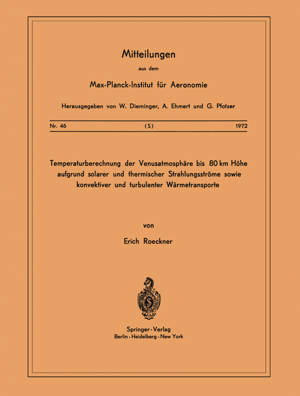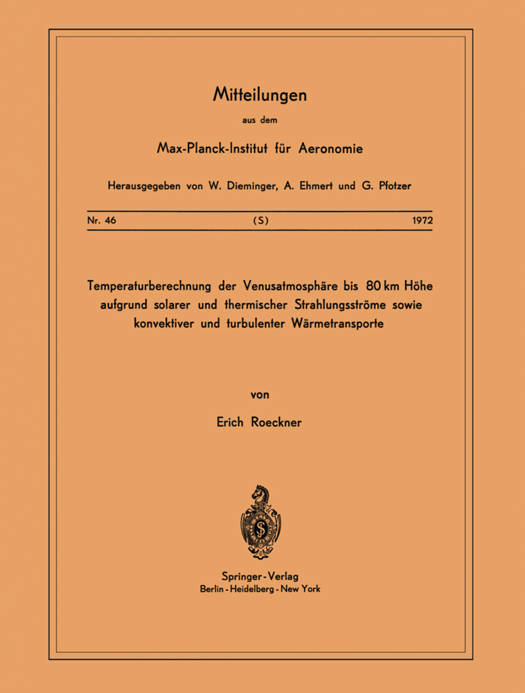
- Afhalen na 1 uur in een winkel met voorraad
- Gratis thuislevering in België vanaf € 30
- Ruim aanbod met 7 miljoen producten
- Afhalen na 1 uur in een winkel met voorraad
- Gratis thuislevering in België vanaf € 30
- Ruim aanbod met 7 miljoen producten
Zoeken
Temperaturberechnung Der Venusatmosphäre Bis 80 Km Höhe Aufgrund Solarer Und Thermischer Strahlungsströme Sowie Konvektiver Und Turbulenter Wärmetransporte
E Roeckner
€ 64,45
+ 128 punten
Omschrijving
Vertical temperature profiles of the Venus atmosphere up to 80 km height were calculated in a time dependent model. A steady state of the atmospheric profiles was reached by numerical intergration from an arbitrary initial distribution of temperature by assuming some atmospheric parameters as surface pressure, planetary albedo etc. The time-rate-of-change of temperature was determined by the vertical divergence of the following fluxes: solar insolation, net infrared radiation of the atmosphere and the ground surface, and sensible heat. The radiation calculation was based on the absorption bands of carbon dioxide and water vapor from the near to the far infrared region of the spectrum. Absorption by clouds was taken into account in parameterized form. Atmospheric profiles were calculated as a function of water vapor content, height and absorptivity of the cloud layer, surface pressure, eddy diffusion coefficient, planetaryalbedo, latitude, and time of day. It appeared, that the lower layers of a pure carbon dioxide atmosphere are convective with an adiabatic lapse rate of temperature. The lapse rate of a carbon dioxide atmosphere with some additional water va- por and thus strong absorption of solar energy is practically adiabatic due to the downward transport of sensible heat. Comparison with direct measurements indicates that the atmosphere below the c10ud level 4 is likely to contain water vapor. A mixing ratio of 10- is sufficient to explain the observed temperature profile.
Specificaties
Betrokkenen
- Auteur(s):
- Uitgeverij:
Inhoud
- Aantal bladzijden:
- 58
- Taal:
- Duits
- Reeks:
- Reeksnummer:
- nr. 46
Eigenschappen
- Productcode (EAN):
- 9783540057765
- Verschijningsdatum:
- 24/02/1972
- Uitvoering:
- Paperback
- Formaat:
- Trade paperback (VS)
- Afmetingen:
- 216 mm x 279 mm
- Gewicht:
- 172 g

Alleen bij Standaard Boekhandel
+ 128 punten op je klantenkaart van Standaard Boekhandel
Beoordelingen
We publiceren alleen reviews die voldoen aan de voorwaarden voor reviews. Bekijk onze voorwaarden voor reviews.











